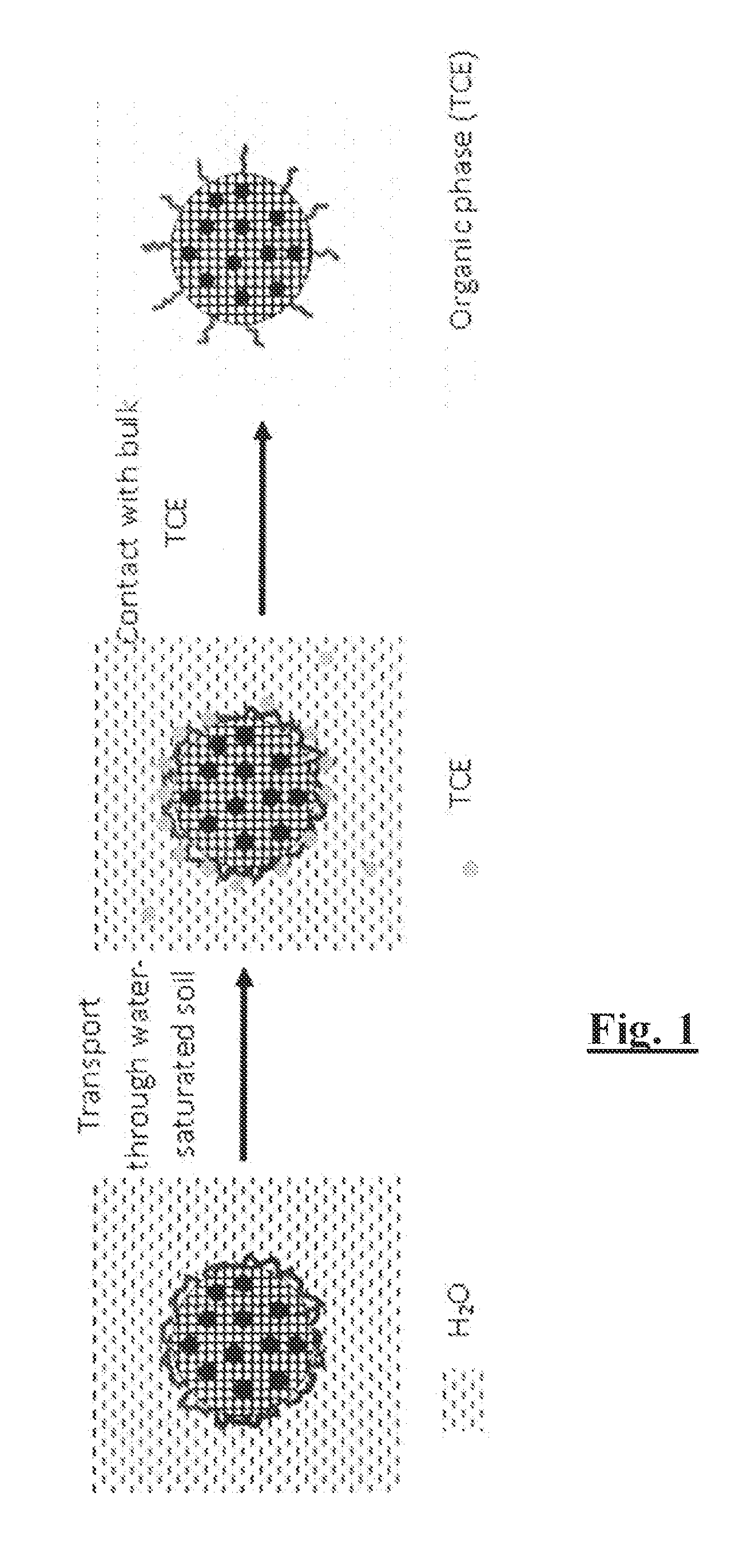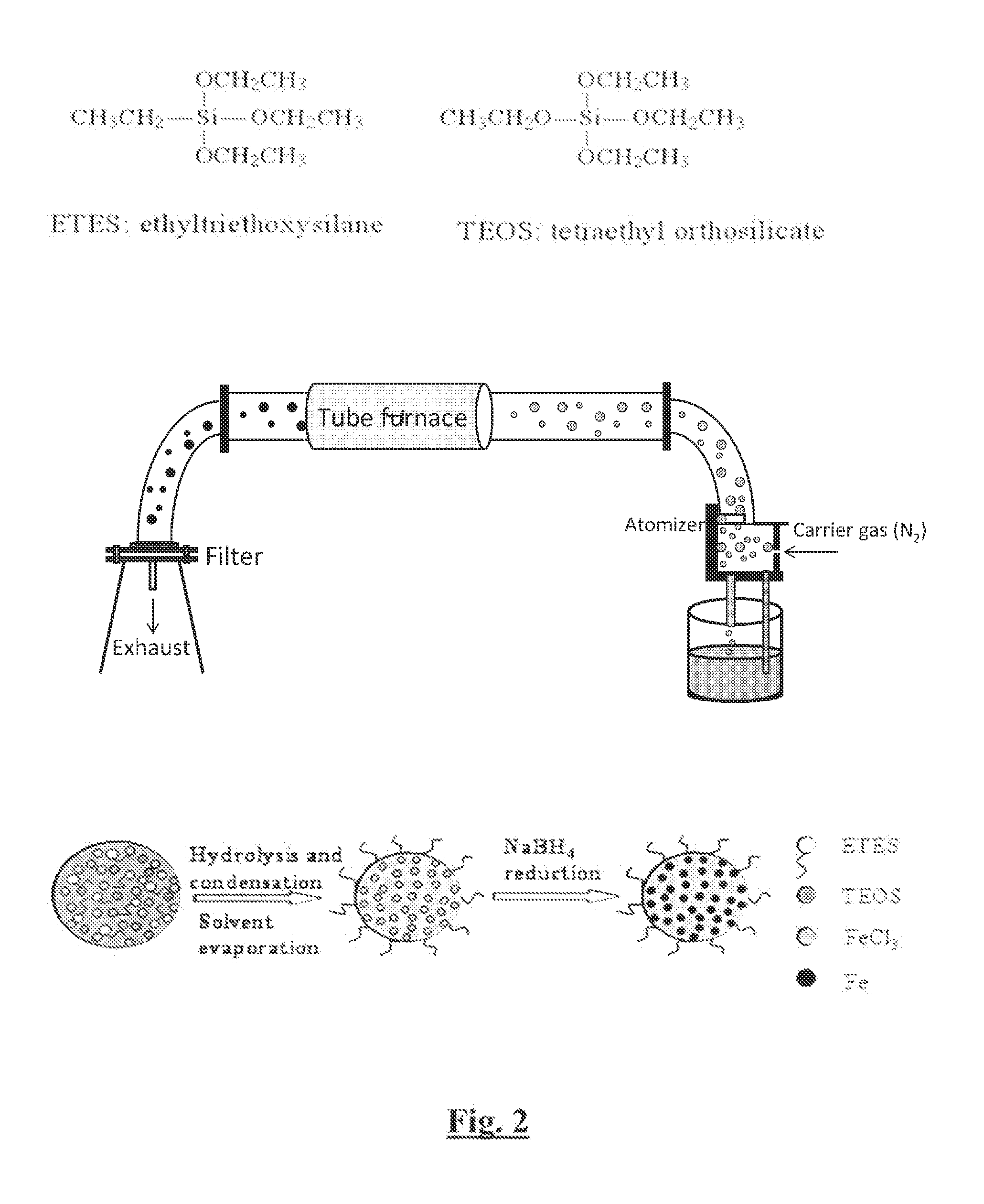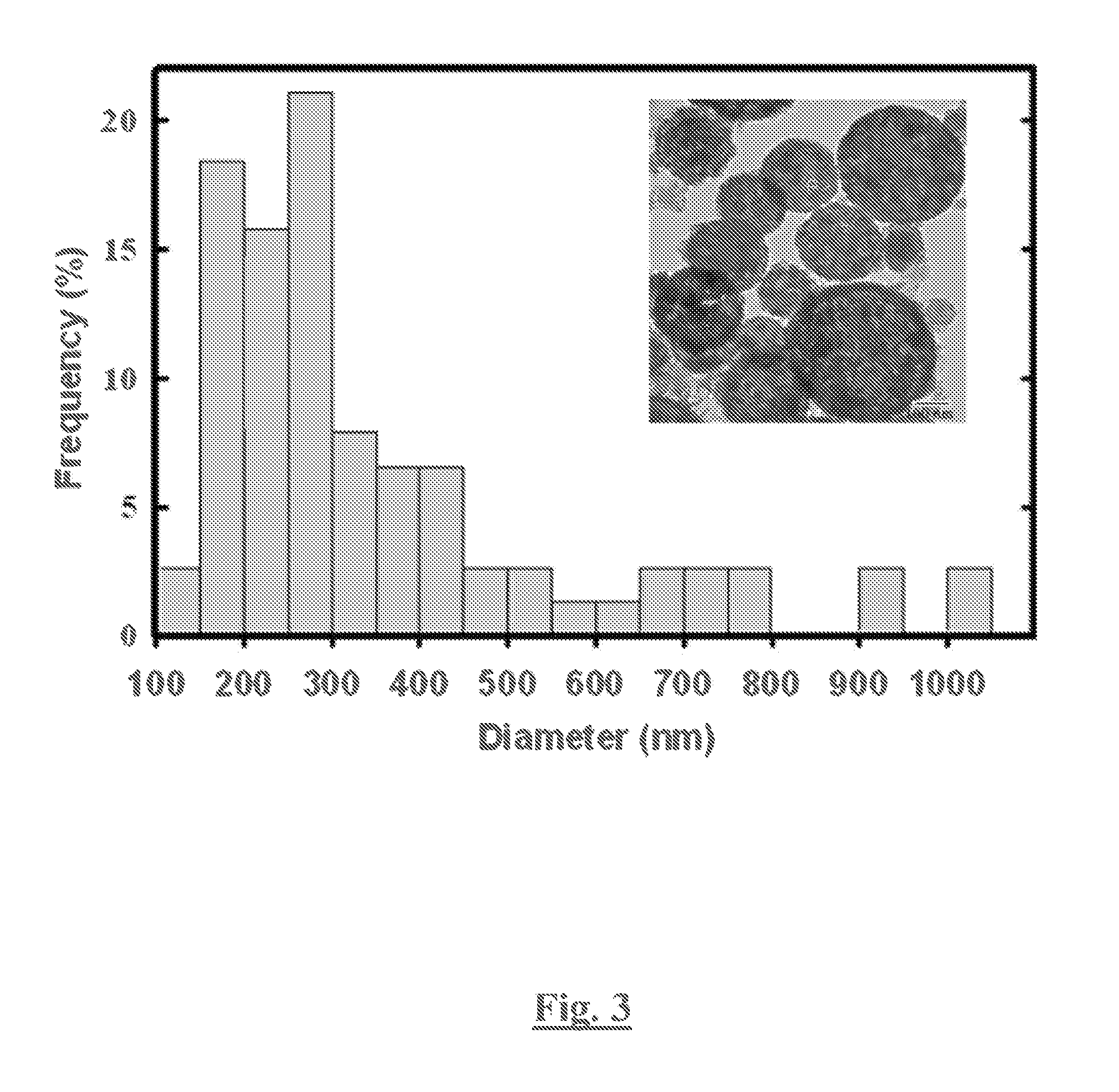Novel multifunctional materials for in-situ environmental remediation of chlorinated hydrocarbons
a multi-functional material and chlorinated hydrocarbon technology, applied in water treatment compounds, contaminated groundwater/leachate treatment, other chemical processes, etc., can solve the problems of difficult to penetrate through sediment, difficult to remove tce particles, magnetic and sticky particles, etc., to achieve rapid removal of dissolved tce, increase the local concentration of tce, and facilitate reaction
- Summary
- Abstract
- Description
- Claims
- Application Information
AI Technical Summary
Benefits of technology
Problems solved by technology
Method used
Image
Examples
Embodiment Construction
[0102]Some of the concepts behind an embodiment of the present invention are illustrated in FIG. 11c which shows a schematic of a carbon microsphere decorated with CMC embedded with NZVI. Our objective is to couple the use of CMC with the carbon microspheres and use the polymer to prevent NZVI from aggregation and maintain solution stability of the carbon colloids. The use of CMC as an anionic polyelectrolyte to enhance colloid stability is established and its ability to adsorb onto hydrophobic surfaces has been well-characterized [32A-34A]. In a close analogy, CMC has been used as a dispersant for coal-water slurries in a recent study [35A] indicating its potential applicability to disperse carbon microspheres. In the current application, the following characteristics are expected to be applicable (1) the NZVI supported on CMC are expected to maintain activity to the dechlorination of TCE (2) in analogy with the adsorptive properties of activated carbon, the carbon microspheres are...
PUM
| Property | Measurement | Unit |
|---|---|---|
| diameter | aaaaa | aaaaa |
| hydrophilic | aaaaa | aaaaa |
| amphiphilic | aaaaa | aaaaa |
Abstract
Description
Claims
Application Information
 Login to View More
Login to View More - R&D
- Intellectual Property
- Life Sciences
- Materials
- Tech Scout
- Unparalleled Data Quality
- Higher Quality Content
- 60% Fewer Hallucinations
Browse by: Latest US Patents, China's latest patents, Technical Efficacy Thesaurus, Application Domain, Technology Topic, Popular Technical Reports.
© 2025 PatSnap. All rights reserved.Legal|Privacy policy|Modern Slavery Act Transparency Statement|Sitemap|About US| Contact US: help@patsnap.com



